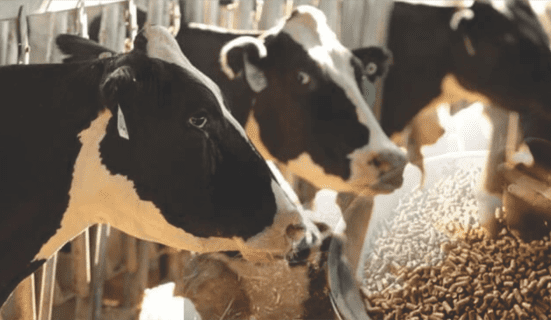Prashant: Could you share insights on how the consumers have evolved, mainly when you started your journey with a company like Bellbrook? How has the marketing landscape transformed, and what notable changes have occurred in consumer behaviour during this period?
Sanjeev: Before we delve into the consumer side, it’s essential to consider the manufacturer’s perspective. The consumer goods industry has two entities at opposite ends of the spectrum – the manufacturer and the consumer. The manufacturer creates the products, and the consumer consumes them – it’s that simple.
Looking back about three decades ago, one of the significant challenges we faced was the inadequate infrastructure within the country. Issues like poor road infrastructure hindered the smooth distribution and reach of products. However, over time, significant infrastructure improvements have facilitated the speedy growth of various product categories, including the dairy sector.
I want to mention the significant impact of digitalization and the Internet. The democratization of information has empowered consumers with easy access to knowledge. As a result, consumers are now more aware of their requirements and preferences. This has led to the introduction and diversification of dairy product categories. Notably, value-added products such as cheese and yoghurt are experiencing faster growth than traditional dairy products like milk.
Digitalization has also enabled brands to target specific consumer groups more effectively. We can reach out to cohorts with similar needs through targeted marketing, tailoring our offerings to meet their demands. Looking forward, personalization of products might become a possibility.
Examining these changes might not appear overly dramatic on a year-to-year basis. However, considering the transformation over several decades, there has been a massive shift in the industry. These developments bode well for the overall growth and improvement of the dairy category.
Prashant: Overall, the democratization of information and the evolving retail landscape have profoundly impacted consumer behaviour, bringing about significant changes in preferences and bridging the gap between urban and rural consumers. So what do you think are the key factors that are influencing the consumer as of now? And consumer preferences as of now?
Sanjeev: As someone who has been closely connected with the retail ecosystem for a long time, I’ve noticed that awareness and access to information have become significant enablers in shaping consumer preferences. Dairy products have always been integral to our lives, providing nutrition and health benefits. Over the years, the perception around dairy products has been positive, extending beyond just milk to include items like cheese and yoghurt.
The changing socio-economic conditions in the country have also played a role in influencing consumers. Consumers are now willing to try out and pay for new products. The retail landscape has evolved drastically, from traditional Kirana stores to multiple platforms, including modern trade and online platforms. This evolution has allowed consumers to explore a broader range of dairy products and has encouraged shopkeepers to adapt to changing preferences.
A personal incident I recently encountered involved a friend’s son with lactose intolerance. He would have had to give up consuming milk entirely in the past, but today, lactose-free milk options are readily available online. This highlights how various factors, such as information awareness and product accessibility, contribute to consumers making informed choices.
In conclusion, the interplay of information, consumer willingness, and the adaptability of manufacturers and retailers are essential factors shaping consumer behaviour and influencing the dairy product market.
Prashant: How has packaging been strategically used to catch consumers’ attention and convey information effectively? How has digital marketing allowed processors to engage directly with consumers, tailoring messages to specific target groups and platforms? Do you see further potential in these marketing approaches as technology advances and consumer behaviours evolve?
Sanjeev: As a processor in the dairy industry, I agree with the significance of packaging and branding. These two aspects have gained immense importance for dairy and the entire food category. While more prominent food brands have been proactive in adopting these strategies, now even dairy brands are following suit, especially in the value-added products space. Packaging serves a crucial role in providing shelf visibility and convenience to consumers. A well-designed and attractive packaging informs, generates curiosity, and encourages consumers to try the product. Just like when we dress well for a meeting, attractive packaging instils a sense of respect and curiosity in consumers.
Different platforms within the dairy industry are constantly evolving, each striving to stand out and reinforce their branding, credibility, and trust. Iconic brands that have successfully done this enjoy the trust and loyalty of consumers who specifically ask for their preferred brand and variant.
However, it’s essential to acknowledge that packaging and branding efforts require significant resources. This might challenge younger brands, who must balance meeting consumer expectations and managing their limited resources effectively.
In conclusion, while packaging and branding are vital for the growth and success of dairy brands, it’s crucial to consider resource limitations, especially for emerging brands seeking to establish themselves in the market.
Prashant: How do you suggest young companies strike a balance in this situation? What approaches or strategies can they adopt to ensure adequate packaging without compromising their commitment to delivering excellent products to consumers?
Sanjeev: From my perspective, understanding the consumer is the foundational step for any brand, be it a mature brand or a young brand in the dairy space. It is crucial to study and analyze consumer preferences and identify gaps in the market that existing brands may not be addressing. Unfortunately, I’ve observed that some legacy players and even new-age brands have not fully grasped this critical aspect. As a result, they may struggle to deliver products that meet consumer expectations regarding quality and features.
In the dairy industry, product fragility is a significant concern. It’s essential to ensure a robust route to market to maintain product integrity from production to the end consumer. This involves focusing on various aspects, including brand communication and delivery, to ensure a seamless consumer experience.
Building a successful branded dairy product requires a long-term strategy. Brands must carefully address different moving parts and focus on getting things right before expanding to other geographies. The temptation to rapidly roll out to multiple cities should be resisted until everything is in place and tested effectively.
In conclusion, a successful dairy brand must prioritize understanding consumers, maintain product integrity, and adopt a focused and measured approach to expansion. Building a brand is a journey that requires attention to detail and a commitment to meeting consumer needs. Younger brands should keep these aspects in mind, focus on the consumer, look at this whole route to market, and take it step by step.
Prashant: As a young dairy processor planning to enter the competitive markets of Noida and Delhi, how can I ensure that my product stands out and doesn’t become just another me-too product? What subtle nuances should I focus on to create a unique proposition and capture consumer interest in this highly competitive space?
Sanjeev: For a young dairy processor entering the liquid milk market, it’s essential to understand the ..significance of pricing and value proposition. The established brands already set a pricing ceiling, so a new brand cannot drastically undercut them without compromising profitability. Instead, the focus should be on offering a compelling value proposition that communicates quality and uniqueness to the heterogeneous consumer base.
Effective communication of the brand’s value proposition can encourage consumers to switch to the new brand, especially in the initial stages. Finding the right balance between price, quality, and profit margins is crucial, and it may require multiple iterations to determine the sweet spot.
For subcategories like cheese or yoghurt, which are still nascent, offering affordable, more miniature packs for trials can be an intelligent approach. This strategy allows more customers to try the products, potentially leading to a more extensive customer base and market expansion. A young brand should prioritize establishing a unique value proposition and finding ways to capture consumer interest without compromising product quality and profitability.
Prashant: What trends and opportunities do you see in the dairy sector in ..India as of now? What are consumers willing to procure or purchase, and what are they ready to experiment with?
Sanjeev: I believe the dairy sector in India is well-poised to capitalize on the growing trend of health consciousness among consumers, especially post-pandemic. There is an inherent behaviour shift towards healthier choices, and dairy products, known for their quality, health benefits, and nutrition, are likely to see increased demand. However, brands must improve their marketing and proposition to stand out and effectively communicate with consumers.
Dairy brands must focus on manufacturing and marketing their products to become better communicators. Packaging design can play a critical role, especially in urban and rural markets, where consumers can be engaged through effective nutritional messaging. Utilizing the front of the packaging can be a small but potentially crucial step in driving consumer engagement and conveying the product’s nutritional benefits.
The dairy sector has significant opportunities to tap into the health-conscious trend. Still, brands must improve communication strategies and effectively highlight their product’s value proposition to resonate with consumers.
Prashant: How can the dairy sector utilize social media more effectively to communicate with consumers and convey the value of dairy products?
Sanjeev: Social media and digital marketing are powerful tools dairy brands need to leverage to engage with consumers effectively. Brands should focus on two key aspects: educating and enriching the consumers. By providing information about dairy products’ benefits and nutritional value, brands can educate consumers about their offerings. Additionally, engaging content and campaigns can help connect with consumers and maintain their interest in the products.
Prashant: Given the declining liquid milk consumption in more developed economies and the potential for international brands to enter the Indian market, how can global brands succeed in the Indian market with its disaggregated and traditional retail setup?
Sanjeev: The Indian market is lucrative for global brands, but the distribution and retail setup is unique and disaggregated. To succeed, global brands must build a robust distribution network and partner with local retailers. It’s essential to demonstrate the value of their products to retailers, showcasing how they can enhance their business and meet the needs of consumers. Despite the challenges, many brands have successfully cracked the Indian market by understanding the nuances and building their presence in the retail ecosystem.
Prashant: What advice would you give young brands trying to scale up in a crowded sector with established mega brands?
Sanjeev: For young brands looking to scale up in a competitive sector, I would advise focusing on understanding their consumers well. Spend ample time with the target audience to grasp their needs and preferences. Once the product meets consumer requirements, the next step is to take it to the market in a focused and sustainable manner. Delivery and communication are crucial aspects in the food industry, especially dairy, as it’s about getting the product right and delivering it effectively to create a positive consumer experience.
Prashant: If you could give one piece of advice to your younger self when you were starting your career, what would it be?
Sanjeev: I would advise my younger self to remain curious. In the initial stages of one’s career, curiosity is at its peak, but as time passes, people tend to feel like they know everything and lose that sense of curiosity. However, staying curious allows continuous learning, better decision-making, and effective implementation of new ideas. I would encourage my younger self to maintain that curious mindset throughout my career.
About Sanjeev Sharma:
Sanjeev Srivastav is celebrated as the esteemed Dairy Leader of the Month, with profound admiration for his strategic brilliance and unwavering vision that propelled a cheese brand to unparalleled heights in the Indian market. With an exceptional understanding of consumer behaviour and market dynamics, he has led multiple brands to success, revolutionizing the dairy landscape with innovative products that meet evolving consumer needs. With unmatched expertise in analyzing market trends and aligning sales strategies with consumer insights, Sanjeev’s impact as a Dairy Leader will undoubtedly shape the industry’s future, inspiring others to embrace innovation and consumer-centric approaches.







